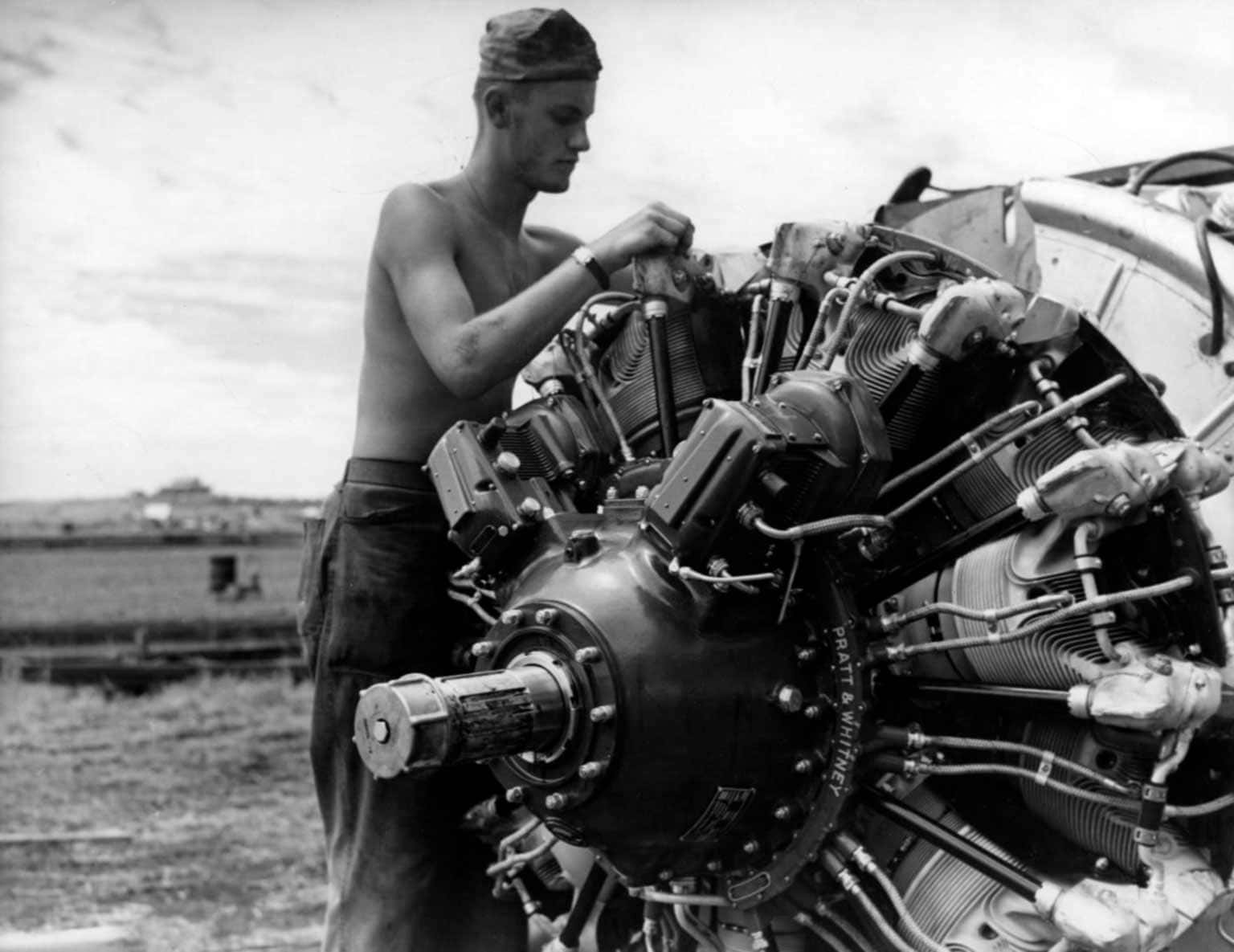An American aircraft engineer repairs a Pratt & Whitney R-1830 aircraft engine at Henderson Field during the Battle of Guadalcanal. Pacific theater of operations, World War II.
Pratt & Whitney is an American manufacturer of aircraft engines for civil and military aviation (the company is one of the “big three” aircraft engine manufacturers along with the British Rolls-Royce Group and the American General Electric). In addition to aircraft engines, Pratt & Whitney produces modular and mobile gas turbine units for industrial purposes, engines for locomotives, and rocket engines.
Pratt & Whitney is one of 4 divisions of Raytheon Technologies.
The Pratt & Whitney Company was founded in 1860 in Hartford, Connecticut by Francis Pratt and Amos Whitney, two former employees of the Colt Company. Their business grew rapidly during the American Civil War, and after the war, it also began producing industrial equipment. After the end of the First World War, the company had to almost completely curtail the production of weapons due to the crisis of overproduction, and the company decided to invest the profits in the development of a new model of an aircraft engine. The first Pratt & Whitney engine, the Wasp, was completed on Christmas Eve 1925. The Wasp developed 425 horsepower (317 kW) during its 3rd test run. It easily passed Navy qualification tests in March 1926, and in October the US Navy ordered 200 engines.
In 1925, Frederick Brant Rentschler acquired a stake in Pratt & Whitney, and in 1929 initiated its merger with the Boeing Airplane Company, Thomas Hamilton (a propeller manufacturer) and Chance Vought (an aircraft manufacturer) into the United Aircraft and Transport Corporation. The placement of the corporation’s shares on the stock exchange brought in $14 million, which was used to acquire several more aircraft and components manufacturers, including Sikorsky Aircraft, as well as several airlines. In 1934, Boeing was expelled from the corporation. In the 1930s, Pratt & Whitney supplied engines to the British and French military aircraft, and by the end of the decade was involved in the US Air Force military buildup. The company’s workforce grew from 5,000 in the early 1930s to 40,000 in 1943.
Immediately after the end of World War II, 85% of US government military orders were withdrawn, the company had to reduce the number of workers to 6 thousand and, at its own expense, begin the development of jet engines with a significant lag behind General Electric and Westinghouse. In 1953, the J57 model was introduced, superior in power to competitors, which began to equip the B-52 bombers; by 1956, 3 thousand of these engines were produced per year. Deliveries of engines for Boeing 707 and Douglas DC-8 passenger aircraft starting in the late 1950s made Pratt & Whitney the largest manufacturer of aircraft engines in the United States.
At the beginning of the 1970s, Pratt & Whitney brought in 75% of the revenue of United Aircraft and Transport, but its profits were steadily declining, so the corporation expanded its activities and changed its name to United Technologies in 1975. A decline in military orders in the early 1990s and a downturn in commercial airline activity led to significant losses for Pratt & Whitney. During this period, International Aero Engines was formed, a joint venture with MTU Aero Engines, Fiat, Rolls-Royce plc, and Japanese Aero Engines, and the V2500 engine they developed was used in the Airbus A320 aircraft.
On August 2, 2005, Pratt & Whitney acquired rocket engine company Rocketdyne from The Boeing Corporation and renamed the company. In 2020, United Technologies merged with Raytheon to form Raytheon Technologies.
Location: Henderson Field, Guadalcanal
Shooting time: November 1942
